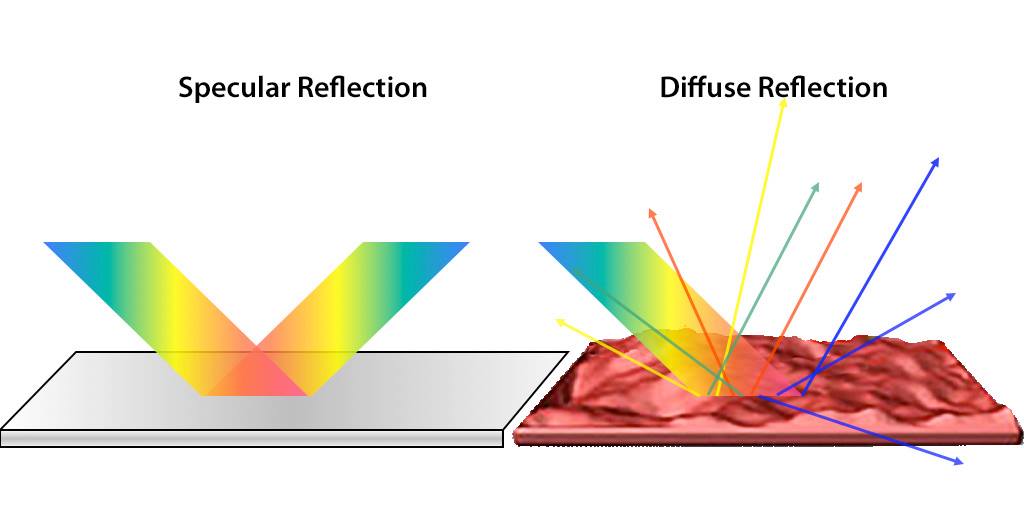
One of the topics taught at the Painting Best Practices workshops is the optics of paint films. For example, we discuss and demonstrate how light interacts with paint films to create glossy or matte surfaces. The following is typical information from the workshop:
Gloss is an observed phenomenon when light is reflected from a surface and thus, to a degree, is a relative effect. When light is reflected in a coherent manner, it creates a specular reflection, which we observe as "gloss". If the light is scattered it causes diffuse reflection that we observe as “matte” (see illustration).


Gloss is an important parameter of paint and is influenced by the distribution and concentration of pigments in the paint film. If paint films are smooth, their specular gloss is directly related to the refractive index of the film surface. However, paint films normally have a degree of surface roughness related to the flow and leveling of the paint and the presence of pigments. The surface roughness of a paint film can be considered to consist of two components, macro roughness, and microroughness. It is primarily microroughness that is affected by the presence of pigment particles at or near the surface of the paint.
The primary reason for using pigments in paint films is to produce opacity. Increasing the level of pigmentation to achieve high opacity also causes the observed gloss to diminish. Although theory predicts that increasing the refractive index of a paint film will increase observed gloss, that is not the case in paint films where an increased refractive index has been achieved by increased pigment concentration. This is because the presence of pigment particles near the surface of the film causes a marked increase in surface microroughness and, thus, a decrease in the observed gloss.
Since the surface roughness of paint is notably affected by the degree of pigment dispersion, for a given pigment loading, it has a significant effect on gloss levels in most paint. Also, the presence of flocculation in paint results in a growth in the mean particle size of pigments and hence growth in surface roughness and a decrease in gloss.
To learn more, read the article, Irregular Gloss on Paint and Varnish.




